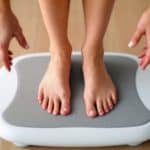Hey, there fellow movers! Ever felt like your feet just aren’t quite cooperating with the rest of your body during a workout or a routine physical task? You’re so not alone in this. Many people struggle with stiff ankles, which, to be honest, can really mess with your rhythm whether you’re out for a run or just trying to nail that downward dog. But worry not; today, we’re diving into the nitty-gritty of ankle mobility. We’re talking what it is, why it matters, and—most importantly—how you can work on it.
Remember when you thought ankle health wasn’t something to fuss over? Well, turns out, our feet and ankles are pretty central to everything from foundational moves in workouts to everyday strength and stability. Let’s break it down and get those joints moving like greased lightning.
Why Ankle Mobility? Let’s Chat About Its Importance
Ankle mobility, in plain English, is the range of motion your ankles have. It matters more than you might think. Good mobility here means better performance in sports, less risk of injury, and simply put, more fluid movements. You start realizing the importance when you bring hormone regulation into the conversation. Unlike what you might assume, hormone health can be indirectly linked to joint function. Ankle issues might deter you from engaging in physical activities, which contribute to overall wellness, affecting hormone regulation over time. It all connects, trust me.
Think about going up the stairs, squatting, or even dancing like no one’s watching. It all needs your feet rocking that flexible, stable movement. Lacking this? Oof, you’re prone to compensating with other parts of your body, creating a cascade of potential problems.
Spotting the Tell-tale Signs
Now, before popping those fancy training shoes on, let’s see if we’re even aware of what’s going wrong. Tight calves, Achilles tendon issues, pain during everyday activities? These are red flags your ankle is waving at you. More subtle? Maybe you’re unable to squat deeply or notice a slight tightness when trying to reach those toes. It’s not always yelling out loud, but when it does, listen up.
Building Your Ankle Strength: The Deets on Hormone Regulation and Ankle Health

Brace yourself for this one: improving your ankle mobility helps in waking up your hormone regulation efforts, albeit indirectly. You’re a whole system in sync. When one thing improves, it’s like a domino effect for your body’s overall functionality. Efficient movement promotes exercise adherence, balanced stress levels, and enhances your feel-good hormones. This is foot work at its finest!
Nothing revolutionary here—but stepping up your game with mindful exercises? Man, that works wonders.
How Can You Improve That Ankle Mobility? Let’s Do It!
Hands up if this excites you—because trust me, it should! A good routine doesn’t only strengthen ankles but also boosts overall bodily function.
The “Get Moving” Checklist
- Ankle Circles
- These are the simple OG of ankle workouts. Circular motions, each direction folks—let’s aim for 10 times clockwise, then switch it up to counterclockwise.
- Calf Raises
- Plant both feet flat, rise on those toes, and let the muscle love roll. About 15 reps; gradually add intensity.
- Heel Walks and Toe Walks
- Put imaginary apart walls between that heel and toe as you strut down the hallway. Go for a stroll every day; it’s fun!
- Soleus Stretch
- That sweet spot behind the knee? Yeap, gently work on it. Take a step back half-lunge style, then sit into it.
- 5. **Lunge Holds
- Classic runner’s stretch with a mini squat—bet that does you’ll feel those ankles doing actual work.
Combining these steps, not to mention committing to consistency, will help joint flexibility soar.

The “Everyday Places” To Keep Rolling
Fancy gyms aren’t your thing? Cool! Bring that ankle health journey into real life. Take those stairs rather than lazy escalators; next thing, instead of just sitting, mimic some ankle bands work under the table.
Consider incorporating small movements into office hours—ankle moving, flexing now and then, or finding chances to work where standing up is acceptable.
Don’t Fight The Fail: Setbacks Happen
Let’s circle back for a hot second. Expect a plateau every now and then with gaining ankle mobility. Setbacks do happen. It’s normal! Maybe you get busy, hit a lazy streak, or an old injury crops up—no sweat. Renewed diligence often kicks start things again. Consistency can tease stubborn knots apart and send those joint health vibes into balance.
Trust me, just as in acquiring your fave skill or that perfect recipe, this entire thing rests on persistence and patience.

Comparing the Ankle Mobility Options
| Exercise | Skill Level | Equipment Needed | Goal Achieved |
|---|---|---|---|
| Ankle Circles | Beginner | None | Range of Motion |
| Calf Raises | Easy | None | Strength |
| Heel/Toe Walks | Easy | None | Flexibility |
| Soleus Stretch | Intermediate | None | Relief |
| Lunge Holds | Intermediate | None | Control |
Hormone Regulation Wrapped In
Indirectly, taking care of joints keeps you in the fitness game longer, positively affecting hormone regulation naturally. Despite them feeling worlds apart, your consistent commitment to something as metamorphic as foot work branches growth elsewhere in wellness.
Pause, Reflect, Repeat
Before we close, let’s touch base on iteration. It’s essential, in this “feels like a maze” journey, to genuinely listen to how your body and hormones react as you shape ankle strength. Embracing the awkward, little shakes or that burning sensation out the gate? Legends in the making feel the same.
At day’s end—shin splint stories, hormone roller coasters, killer runs, fluid walks—evolve with ankle mobility’s threads in its art and science cloth.
Go ahead, trust those feet; take tiny steps or aim for expansive jumps. Renewal happens within our limb voice demands. Stay consistent, be challenging, even when you’re busy and moves tested tactile self-awareness becomes reward enough.
It’s all about making feet happy, one move at a time!
Frequently Asked Questions
What causes a hormonal imbalance?
A hormonal imbalance can be caused by natural changes or stages in your life, including puberty, pregnancy, perimenopause, and menopause. Additionally, hormone levels can dramatically decrease after a partial or full hysterectomy. Other causes include tumors, adenomas, and damage or injury to endocrine glands, as well as autoimmune diseases[1][5].
What are the signs and symptoms of a hormonal imbalance?
The signs and symptoms of a hormonal imbalance can vary widely but may include irritability and fatigue, mood swings and depression, skin dryness and loss of elasticity, water retention and weight gain, osteoporosis and joint pain, less interest in sex, insomnia and other sleep disorders, and memory issues and difficulty concentrating[1][5].
How does hormone replacement therapy help with hormonal imbalances?
Hormone replacement therapy helps by stabilizing and increasing hormone levels, which can alleviate symptoms such as hot flashes, night sweats, and vaginal dryness. It can also improve sleep, increase energy, enhance memory, and protect joint and bone health. There are various forms of hormone therapy, including systemic hormone therapy, low-dose vaginal products, and bio-identical hormone replacement[1][3].
What are the risks and benefits associated with hormone replacement therapy?
Hormone replacement therapy can increase the risk of breast cancer, stroke, and blood clots. However, it also offers several benefits, such as relieving menopause symptoms, lowering the risk of colon cancer and macular degeneration, and protecting bone strength. It is important to weigh the risks against the benefits by consulting with a healthcare provider[3][5].
References



